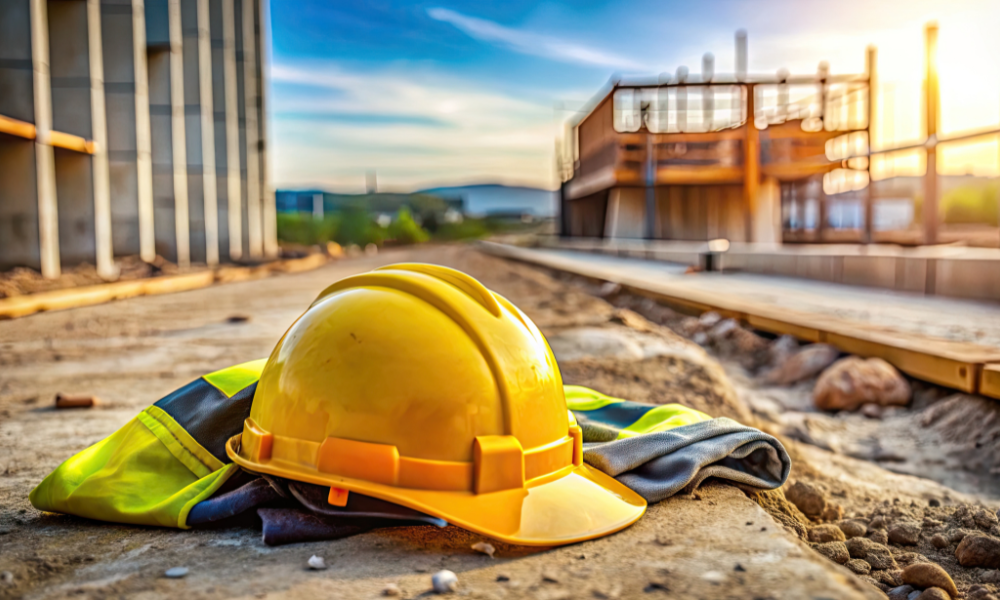95 per cent of workplace brain injuries are preventable

According to the Northern Brain Injury Association (NBIA), around 10 per cent of the millions of workplace injuries are brain injuries – and 95 per cent of these injuries are preventable.
However, the NBIA says that it can be hard to get a proper grasp of the exact number of head injuries occurring in the workplace because many go unreported or are lumped in with other injuries. This is echoed by organization Brain Injury Canada which says that the “invisible injury” of concussion is often not understood due to lack of education or public awareness.
And these injuries are sadly on the rise. The Workplace Safety and Insurance Board (WSIB) Statistical Report in 2016 noted that injuries coded as “concussions” had increased from 0.6 per cent in 2002 to 5 per cent in 2015 – a whopping 800 per cent increase. The Canadian Centre for Occupational Health and Safety (CCOHS) also highlights that statistics show that the number of time-loss claims for work-related concussions increased by 371 per cent in Ontario from 2004 to 2013.
Subscribe to our free newsletter to stay up-to-date with the world of safety.
Brain Injury Canada also notes that male workers are most susceptible to Traumatic Brain Injury (TBI), across all severity levels that make up 60 per cent of those who suffer from workplace-induced TBI.
Looking at these statistics, it’s clear that head injuries are a pressing issue in Canadian workplaces and more needs to be done to prevent them. Here are three things that employers and safety professionals need to know when it comes to handling head protection.
1. What are brain injuries? Dolman Law Group explains that there are four main types of brain injury (one of which being the most common which we will cover in our next point). The four main types of TBI are concussions, contusions, penetrating injuries and anoxic brain injuries.
Contusions are bruises of the brain tissue, typically caused by an impact to the head. These can range from mild to extremely severe. And any form of brain injury requires immediate attention – some severe injuries can cause the brain to swell and may prevent proper oxygenation of the brain.
READ MORE: Back-of-head coverage
On that note, anoxic brain injuries occur when the brain does receive enough oxygen to operate properly. “This can occur as a result of poisoning, drowning, carbon monoxide poisoning, choking, suffocation, or anything that prevents the lungs from taking in a normal amount of oxygen molecules,” says the Dolman Law Group.
2. Learn the signs and symptoms of concussion. The CCOHS says that concussions are the most common form of TBI. “It is caused by a bump, blow, or jolt to the head or by a hit to the body that causes the head and brain to move back and forth rapidly,” says the CCOHS. The organization says that a concussion may or may not involve loss of consciousness – indeed, you don’t need to black out or be knocked out to experience a concussion.
And even then, concussions don’t even have to be caused by bumps or blows – they can be caused by whiplash, or shaking or jerking of the head for example. The organization says that in Canada, the highest rates of concussions occur in workplaces in the transportation, storage, and primary industry sectors (e.g. forestry, mining or fishing). The CCOHS says that the most common cause of head or brain injuries in the workplace are a result of slips, trips and falls, being struck by or against an object, and motor vehicle collisions.
The Centers for Disease Prevention and Control (CDC) says that concussion signs and symptoms typically occur soon after injury (though seriousness of injury is sometimes only apparently hours or even days after the initially injury). Symptoms include: hazy memory, appearing dazed or stunned, clumsy moves, loss of consciousness, headache or “pressure” in the head, nausea, balance problems, confusion, etc.
Employers and safety employers should certainly be aware of these signs and symptoms as concussions can be incredibly serious injuries.
READ MORE: Hard hats and headaches: A real pain?
3. There is more to head protection than hard hats. Now that we aware of the kinds of brain injuries than can occur, it is essential to provide workers with adequate personal protective equipment (PPE). Of course, hard hats (or industry safety helmets) have been conceived to protect against falling or swinging objects. But there is more to head protect than just hard hats. Industrial scalp protectors (or bump caps) are also available and used to protect from knocking against stationary objects. And even hair nets count as head protection and help protect the hair from getting tangled with other objects.
Read more: The best hard hats to recommend to your construction team





